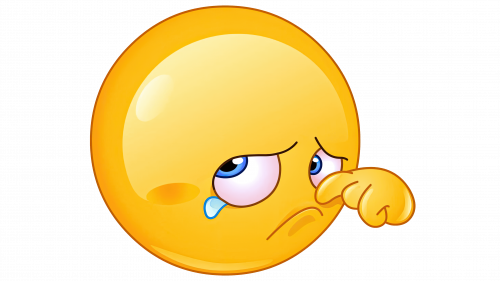In the realm of digital communication, emojis have transcended their role as mere conveyors of personal emotion. Recent findings by Worldemojiday reveal that on Facebook alone, over 900 million emojis are used in messages daily, with an additional 700 million featured in posts. This widespread usage underscores the evolution of emojis into a significant tool in social media marketing (SMM). Studies show that posts incorporating emojis attract 10-20% more engagement, such as likes, compared to those without.
Among the many emojis, those representing human emotions remain the most popular. One intriguing example is the crying emoji. It’s a common misconception that these emojis solely represent sorrow or grief. In reality, the crying emoji encompasses a broader spectrum of emotions. This article will delve into the various crying emojis available in the standard set, exploring their diverse meanings and uses in digital conversations. These symbols, often misunderstood, can express a range of feelings, from overwhelming joy to deep empathy, demonstrating the complexity and versatility of emotional expression in the digital age.
Meaning and use of Crying Emoji
Navigating the delicate world of emoji, particularly the world of the “tear” emoji, can sometimes be tricky. This emoji has several variations, each conveying a different emotion. The teary-eyed variant, accompanied by a smile, usually means “laughing until you cry,” an expression of intense amusement. On the other hand, a variant with flowing tears usually signifies sobbing or a strong sense of sadness.
Some messaging platforms portray the two variants in the same way, which can lead to misunderstandings. For example, you could accidentally use the laughing tears emoji in response to a message that actually expresses sadness or grief. Such confusion can lead to awkward and even hurtful situations because these emojis denote completely different emotions. This is a clear example of how digital communication, while convenient, requires emotional literacy and attention to detail to avoid misinterpretation.
😢 Crying emoji
The 😢 Crying emoji, depicting a single tear falling from one eye, is a versatile symbol used in digital communication to convey a range of emotions, primarily centered around sadness, disappointment, or a deep sense of empathy. The specific meaning often depends on the context in which it is used:
- Expression of Sadness or Grief: The most straightforward use of this emoji is to express personal sadness, sorrow, or grief. It can represent feelings of loss, disappointment, or hurt.
- Conveying Empathy or Sympathy: When responding to someone else’s unfortunate news or sad story, the 😢 Crying emoji is often used to show empathy and understanding, conveying a sense of shared emotional pain.
- Reflecting a Deep Level of Emotional Impact: This emoji can be used to indicate that something (like a movie, a book, or a personal experience) was deeply moving or had a significant emotional impact, to the point of bringing the sender to tears.
- Illustrating Frustration or Helplessness: In certain contexts, the emoji is used to express frustration or a feeling of helplessness about a situation, indicating a level of distress or annoyance that is deeply felt.
- Used in a Lighter, Less Serious Context: Sometimes, the 😢 Crying emoji is employed in a more playful or exaggerated manner. For example, it might be used to show a mock level of sadness over something minor, like missing out on a social event or the end of a favorite TV show.
- Expressing Relief or Tears of Joy: Occasionally, the emoji is used to convey tears of relief or joy, where the context is clearly positive, but the emotional intensity is such that it elicits tears.
Indicating Nostalgia or Longing: In some messages, the emoji might be used to express feelings of nostalgia or longing for past times, events, or relationships. - As a Reaction to Overwhelming Events: Whether these events are positive or negative when something feels overwhelming or too much to handle, the 😢 Crying emoji can be an appropriate response.
😭 Weeping Emoji
The 😭 Weeping emoji, characterized by a face with closed eyes and a profusion of tears, conveys intense levels of sadness or distress. This emoji is quite expressive and is used in various contexts to depict strong emotions:
- Deep Sadness or Grief: The most common use of this emoji is to express profound sadness, grief, or despair. It’s often used in situations of personal loss or when discussing particularly upsetting or tragic events.
- Overwhelming Joy or Relief: Paradoxically, the 😭 Weeping emoji can be used to denote overwhelming joy or relief, where the intensity of positive emotions brings tears. This could be in response to happy news, heartwarming moments, or a sense of relief after a stressful situation.
- Frustration or Anguish: This emoji sometimes represents a heightened state of frustration or angst. For example, when faced with a seemingly insurmountable problem or a series of unfortunate events, the emoji can encapsulate a sense of being emotionally overwhelmed.
- Empathetic Response to Sadness: Similar to the 😢 Crying emoji but more intense, the 😭 Weeping emoji can be used to show empathy towards someone else’s suffering or bad news, conveying a deeper sense of shared emotional pain.
- Dramatic or Exaggerated Sadness: In a less serious context, this emoji is often employed in a hyperbolic or humorous way to indicate a dramatized reaction to something relatively minor, like a favorite show ending or missing out on an event.
- Tears of Laughter: Sometimes, especially in informal or jovial contexts, the 😭 Weeping emoji is used to indicate that something is so funny that it has brought the sender to tears, representing laughter to the point of crying.
- Intense Nostalgia or Longing: This emoji can be used to express deep feelings of nostalgia or longing, especially for times, places, or people that are missed deeply.
- Feeling Overwhelmed or Helpless: In situations where one feels overwhelmed by circumstances, whether they are positive or negative, the 😭 Weeping emoji can express a sense of emotional saturation or helplessness.
😂 Laughing until tears
The 😂 emoji, commonly known as “Face with Tears of Joy,” is widely used in digital communication and is characterized by a laughing face with tears streaming from the eyes. This emoji has various interpretations and uses, mostly revolving around expressions of intense joy, amusement, or laughter:
- Expression of Amusement or Laughter: The primary use of the 😂 emoji is to convey laughter or amusement. It’s typically used in response to a joke, a funny story, or a situation that the sender finds hilarious.
- Indicating Something is Extremely Funny: The addition of tears suggests that something is not just funny but extremely so. It implies a level of amusement that’s so intense it brings one to tears.
- Response to Humorous Content: This emoji is often used when sharing or responding to humorous content, such as jokes, memes, funny videos, or comedic stories.
- Conveying Irony or Sarcasm: In certain contexts, the 😂 emoji can be used to convey a sense of irony or sarcasm. For instance, if something is absurd or unexpected, the emoji can be used to highlight the humorous side of the situation.
- Lightening the Mood: It’s used to lighten the tone of a conversation. If a discussion is taking a serious turn, inserting this emoji can introduce a lighter, more playful element.
- Exaggeration for Effect: Often, the 😂 emoji is employed in an exaggerated manner for comedic effect. It may be used to respond to something that’s mildly funny, but the sender wants to emphasize their amusement.
- Indicating Relatable Content: Sometimes, this emoji is used to respond to situations or content that the sender finds particularly relatable, where the humor lies in the accuracy or truth of the situation.
- Shared Laughter in Group Conversations: In group chats or social media, the 😂 emoji can serve as a collective response to a funny remark or situation, creating a shared experience of laughter and enjoyment.
🤣 Rolling on the floor with laughter
The 🤣 emoji, known as the “Rolling on the Floor Laughing” (ROFL) emoji, depicts a face tilted sideways with tears of joy, symbolizing extreme amusement. This emoji is used to convey a stronger level of laughter or amusement than the 😂 Face with Tears of Joy emoji. Here are the various contexts in which the 🤣 emoji is commonly used:
- Intense Amusement or Hilarity: This emoji is primarily used to express a high level of amusement, often in response to something extremely funny. It suggests that something is so humorous that it metaphorically knocks the sender off their feet, causing them to ‘roll on the floor laughing.’
- Exaggerating for Comic Effect: In many cases, the 🤣 emoji is used to exaggerate the sender’s reaction for comic effect. It amplifies the humor in a situation or response, even if the actual reaction might be less intense.
- Responding to Jokes or Funny Situations: Similar to the 😂 emoji, the 🤣 emoji is often used in response to jokes, funny anecdotes, humorous videos, memes, or any content that is found to be exceptionally hilarious.
- Conveying a Sense of Irony or Sarcasm: This emoji can be employed to convey a sense of irony or sarcasm, particularly in response to situations that are so absurd or unbelievable that they become humorous.
- Shared Laughter in Social Interactions: In group chats or social media interactions, the 🤣 emoji can symbolize a shared moment of humor, enhancing the sense of camaraderie and shared enjoyment in a group setting.
- Indicating a Casual, Playful Tone: The use of this emoji often signifies a casual and playful tone in the conversation. It’s a way to keep the interaction light-hearted and enjoyable.
- Expressing Relief Through Humor: Sometimes, this emoji is used to express relief in a humorous way, especially after a tense or stressful situation has been resolved or when looking back at a challenging experience with a lighter perspective.
- Highlighting the Humorous Aspects of Relatable Situations: It can be used to highlight the humor in everyday, relatable situations, where the exaggeration is part of the joke itself.









